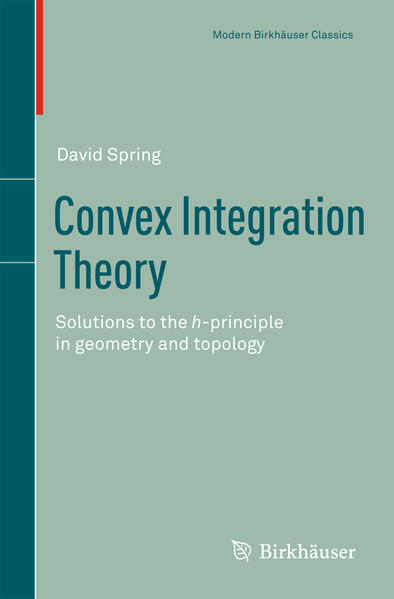This is a comprehensive study of convex integration theory in immersion-theoretic topology, providing methods for solving the h-principle for a variety of problems in differential geometry and topology, with application to PDE theory and optimal control theory.
1. Historical Remarks Convex Integration theory, ? rst introduced by M. Gromov [17], is one of three general methods in immersion-theoretic topology for solving a broad range of problems in geometry and topology. The other methods are: (i) Removal of Singularities, introduced by M. Gromov and Y. Eliashberg [8]; (ii) the covering homotopy method which, following M. Gromov's thesis [16], is also referred to as the method of sheaves. The covering homotopy method is due originally to S. Smale [36] who proved a crucial covering homotopy result in order to solve the classi? cation problem for immersions of spheres in Euclidean space. These general methods are not linearly related in the sense that succ- sive methods subsumed the previous methods. Each method has its own distinct foundation, based on an independent geometrical or analytical insight. Con- quently, each method has a range of applications to problems in topology that are best suited to its particular insight. For example, a distinguishing feature of ConvexIntegrationtheoryisthatitappliestosolveclosed relationsinjetspaces, including certain general classes of underdetermined non-linear systems of par- 1 tial di? erential equations. As a case of interest, the Nash-Kuiper C -isometric immersion theorem can be reformulated and proved using Convex Integration theory (cf. Gromov [18]). No such results on closed relations in jet spaces can be proved by means of the other two methods. On the other hand, many classical results in immersion-theoretic topology, such as the classi? cation of immersions, are provable by all three methods.
Inhaltsverzeichnis
Convex Hulls. - Analytic Theory. - Open Ample Relations in 1-Jet Spaces. - Microfibrations. - The Geometry of Jet Spaces. - Convex Hull Extensions. - Ample Relations. - Systems of Partial Differential Equations. - Relaxation Theory.





































